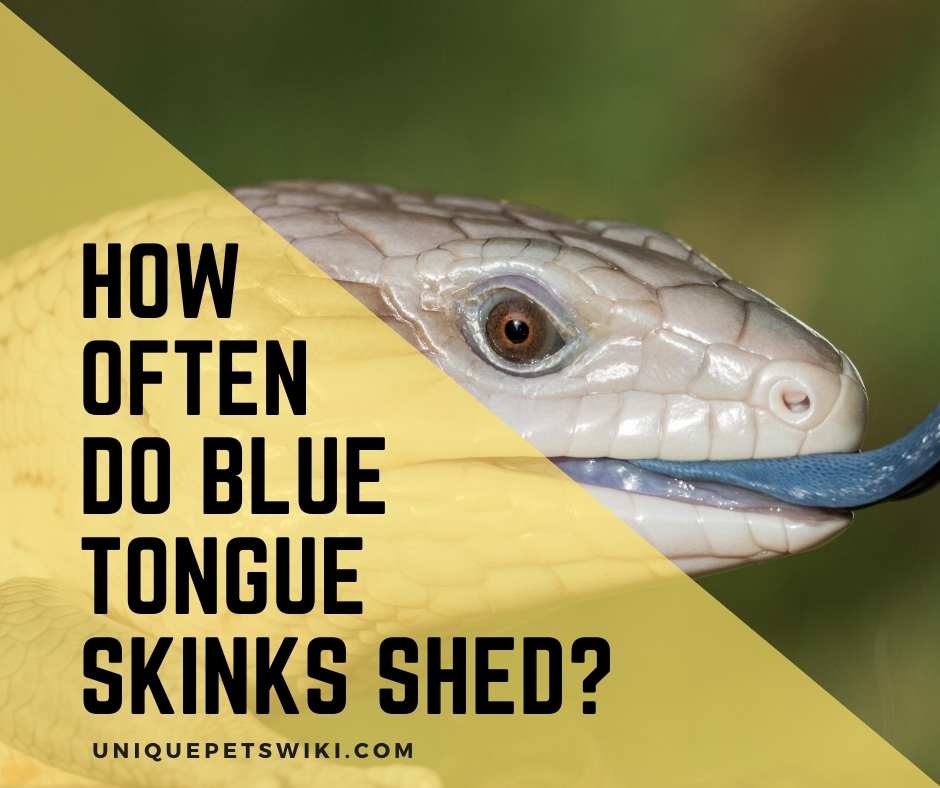Shedding in reptiles is a normal process in which they replace their old skins with new ones. Most blue tongue skinks owners do not understand shedding behavior in their pets. But how often do blue tongue skinks shed? We will discuss more about this.
We came up with this article to help you understand how often you should expect your blue tongue skink to shed. And, how you can help your blue tongue skink shed.
Have you ever heard of that verse that says, “My people perish due to lack of knowledge”? Well, keep reading this article, so you don’t perish.
This article has been reviewed by Dr. Dilber. Read more about our knowledge control process here.
Contents
Do Blue Tongue Skinks Shed?
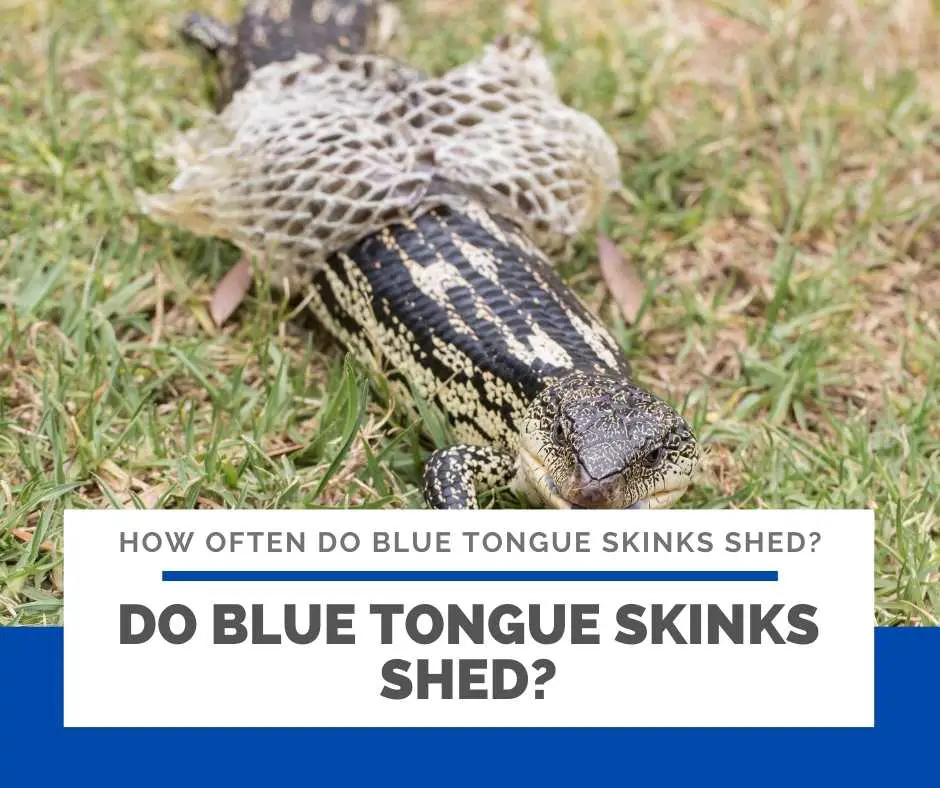
Scientifically, shedding is known as ecdysis. It is a complex process by which reptiles replicate a new epidermis under the new one.
When the new epidermis is ready, the reptiles release enzymes that separate the new skin from the old.
Thus, Yes, blue tongue skinks shed as they are reptiles. But, unlike the snakes that cast off the whole skin at once, blue tongue skinks shed in pieces.
How Often Do Blue Tongue Skinks Shed?
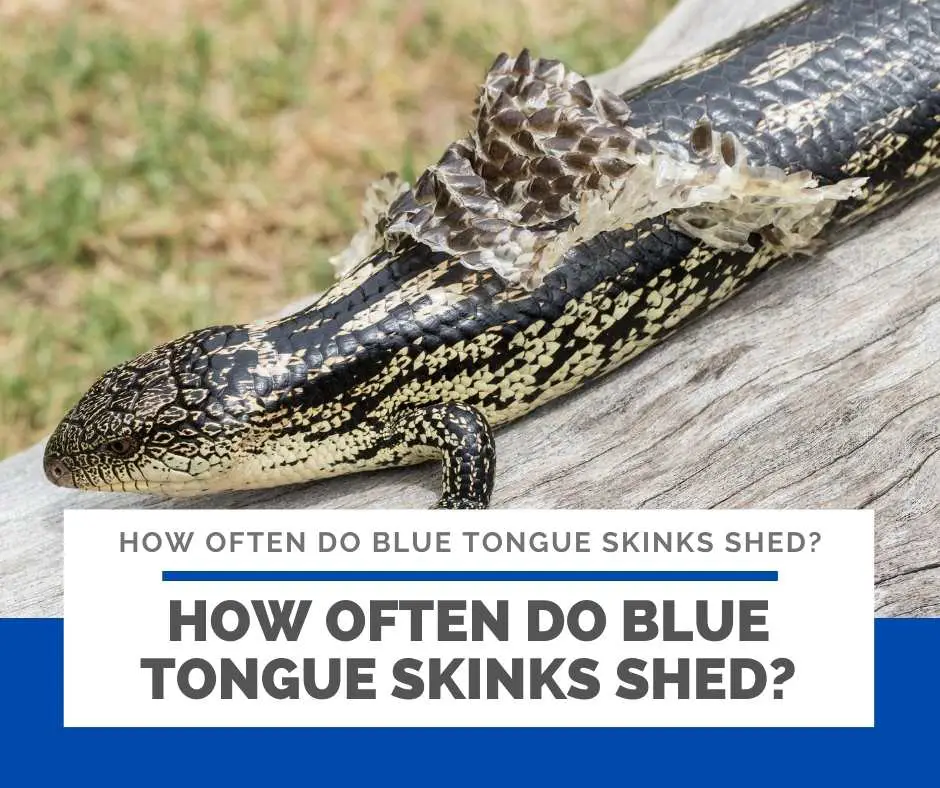
Adult blue tongue skinks shed at least 4-6 times in a year. Shedding in blue tongue skinks is connected to hormonal changes. Thus, one adult blue tongue skink can shed four times in a year, while others might shed six times.
Even so, several factors may affect the blue tongue skinks shedding process. They include:
- Age
- Health issues
Age
Baby blue tongue skinks shed more frequently than juveniles and adults. Thus, baby blue tongue skinks shed once every 2-3 weeks. For juveniles, who are between 12-18 months old, they shed once every month. And, adult blue tongue skinks that are 18 months and older shed once every 2-3 months.
Why the Difference
The reason why baby blue tongue skinks shed more frequently than adults is that they are growing.
The cells of baby blue tongue skink multiplicate fast as their growth rate is high. So, at a young age, the epidermal cells are renewed at least once in 2 weeks.
When blue tongue skinks are below one year, their growth rate is high. Thus, they shed more frequently to replace the old that otherwise might become tighter on their body.
Health Issues
When older blue tongue skinks, shed more than once in 6 weeks, can signify health issues. Thus, if your blue tongue skink is shedding more than it should, you should consult your pet vet for diagnosis.
New to blue tongue skink? Check out the blue tongue skink care sheet now! We had listed out all the things you need to know about blue tongue skinks as pets. Check it now!
What You Need to Consider When Your Blue Tongue Skink Shed?

During the shedding period, blue tongue skinks behave strangely. They become more aggressive and do not like to be handled.
They can also look pale and refuse to eat. Thus, it is necessary to observe blue tongue skink’s normal behavior before shedding so that you can differentiate when sick and when it’s just shedding.
Here are some of the signs that you might observe during the shedding process.
- Loss of appetite
- Lethargic
- Pale
- Bulging eyes
- rubbing against walls
- milky skin on their belly
- irregular pooping
- digging
- dull skin
Loss of Appetite
If suddenly your blue tongue skink does not want to eat, don’t get overly worried. It is because shedding makes blue tongue skinks feel sick and uneasy.
Thus, they might refuse to eat. However, you must offer drinking water to blue tongue skinks as they sometimes get more thirsty than usual during shedding.
Lethargic
Your blue tongue skink might become inactive and irritable before and during the shedding process.
It is because shedding in blue tongue skinks is never a fun thing for them. It’s associated with hormones, and thus causes them stress.
Thus, you should not handle or try to interact with them during the process.
Pale
It’s normal for their skin to turn pale before and during the shed. Thus, if you notice paleness in your blue tongue skink, wait for a few days before calling a vet.
Blue tongue skink’s skin goes back to normal as soon as the shedding is over.
Bulging Eyes
It’s normal for blue tongue skink’s eyes to appear as if they are about to pop out, do not worry. It is because blue tongue skinks’ eyes might appear that way during the shedding period.
How to Help a Blue Tongue Skink Shed
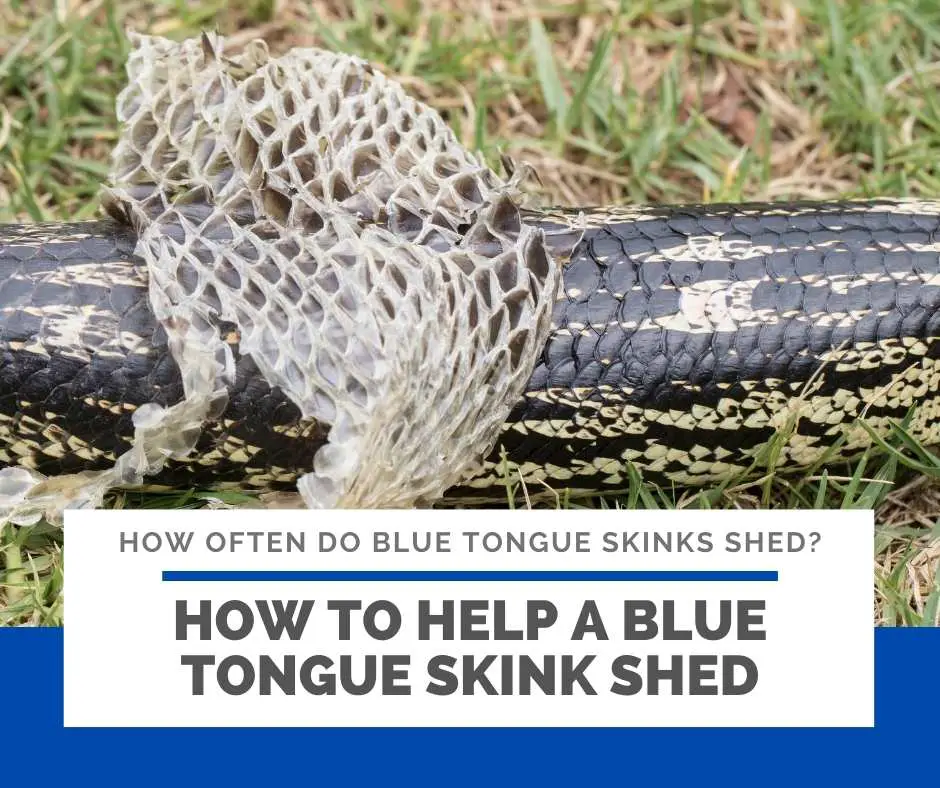
In most cases, blue tongue skinks do not require your intervention to shed. However, you can intervene if you observe that your blue tongue skink takes over three weeks to shed.
As we mentioned, the shedding cycle can take between three days to 3 weeks. A delayed shedding can be as a result of a stuck skin or underlying issues. Mostly the skin may be stuck at the end portion of toes, ears, and limbs. You should help the blue tongue skink to shed this skin. If the skin is left unremoved, it can cause rotting.
Thus, if your blue tongue skink is taking over three weeks to finish the shedding cycle, you must help it by:
Provide Them with a Suitable Habitat
The best and the essential help for your blue tongue skink during shedding is providing them with a suitable habitat for your blue tongue skinks.
A suitable habitat means providing an enclosure with ideal temperatures, moisture, substrate, accessories, and UVB lighting.
During the shedding process, it’s necessary to moisturize your blue tongue skink habitat properly. Temperature, humidity, and lighting play an important role while shedding. Proper habitat can accelerates the body metabolic processes of the body and speed up the shedding.
Sometimes blue tongue skinks scrub their bodies against objects to get rid of a stuck skin. Thus, accessories are also suitable for enhancing the shedding process.
New to blue tongue skink? Check out the blue tongue skink care sheet now! We had listed out all the things you need to know about blue tongue skinks as pets. Check it now!
Mist Your Blue Tongue Skink and Their Habitat
You could be thinking that dry skink can help blue tongue skinks shed faster. You’re mistaken, misting their bodies works better.
Thus, it would help if you tried to mist your blue tongue skink bodies and cage at least 3-4 times in a day during the shedding process.
Give Your Blue Tongue Skink a Bath
If misting can enhance shedding, then bathing is the aggressive way of assisting your blue tongue skink in shedding even faster.
Imagine those days when you have dead skin on the bottom of your feet. The pedicurist soaks your feet first before removing the dead skin.
Even blue tongue skinks, soaking them in water for approximately 30minutes can help loosen the unwanted skin.
Thus, the next time your blue tongue skink has difficult times during the shedding process, consider soaking it in warm water.
Don’t Pull the Skin Off If You Don’t Know How To
Pulling off a skin that seems stuck can do more harm to your blue tongue skink than good. Thus, it would be best if you overcame the urge to pull it off even when it seems like it’s waiting for you to do it.
Many blue tongue skink owners often commit this mistake and end up hurting their blue tongue skink.
A Shedding Bath Formula
Using a shedding bath formula should be the last result after trying all of the methods mentioned above.
Many blue tongue skink owners don’t use the formulas, and they can tell you their pets are okay. However, if your blue tongue skink is having trouble during shedding, you can consider it.
You have to add some of this formula in the bathing water, and you are good to go.
What to Do If Your Blue Tongue Skink Is Not Shedding At All
The factors which cause stop the shedding include;
- Inadequate humidity
- skin infections
- parasites
- inadequate heating or lighting
- injuries to skin
- malnutrition.
It is an uncommon problem in blue tongue skinks. However, it is also worth mentioning. A complete failure for your blue tongue skink to shed can be a serious health problem.
Thus, if even after following all the above guidelines to enhance shedding your blue tongue skink is not shedding at all, you should visit a vet.
Failure to shed can be a result of a lack of proper nutrients or health issues. Therefore, you should never ignore such problems in blue tongue skinks.
Wrapping Up
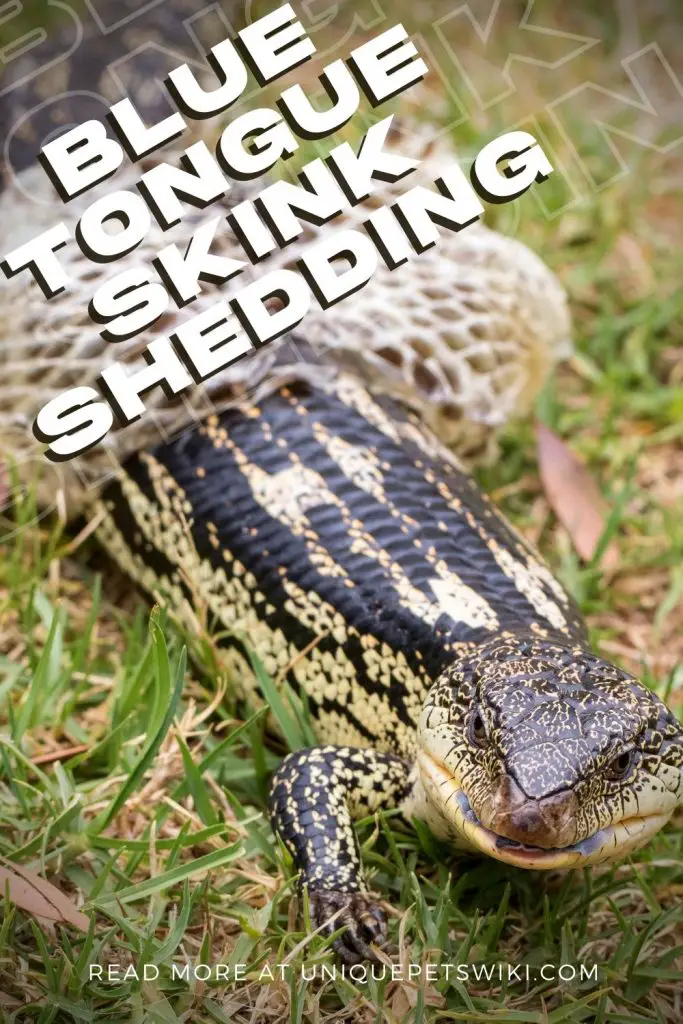
Owning a blue tongue skink comes with responsibilities. It is your responsibility as its owner to understand their normal behavior before, during, and after shedding.
Thus, it would help if you were always on the lookout when your blue tongue skink exhibits abnormal behaviors.
Remember that blue tongue skinks can live in captivity for more than 20 years. However, to have a long, happy life with your pet, you have to ensure they are healthy and comfortable.
I hope that you will now henceforth help your blue tongue skink during the shedding period.
